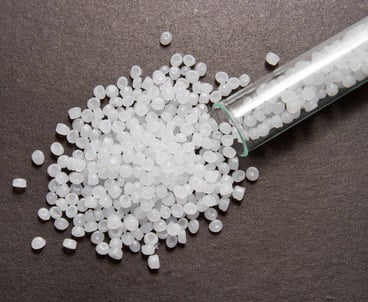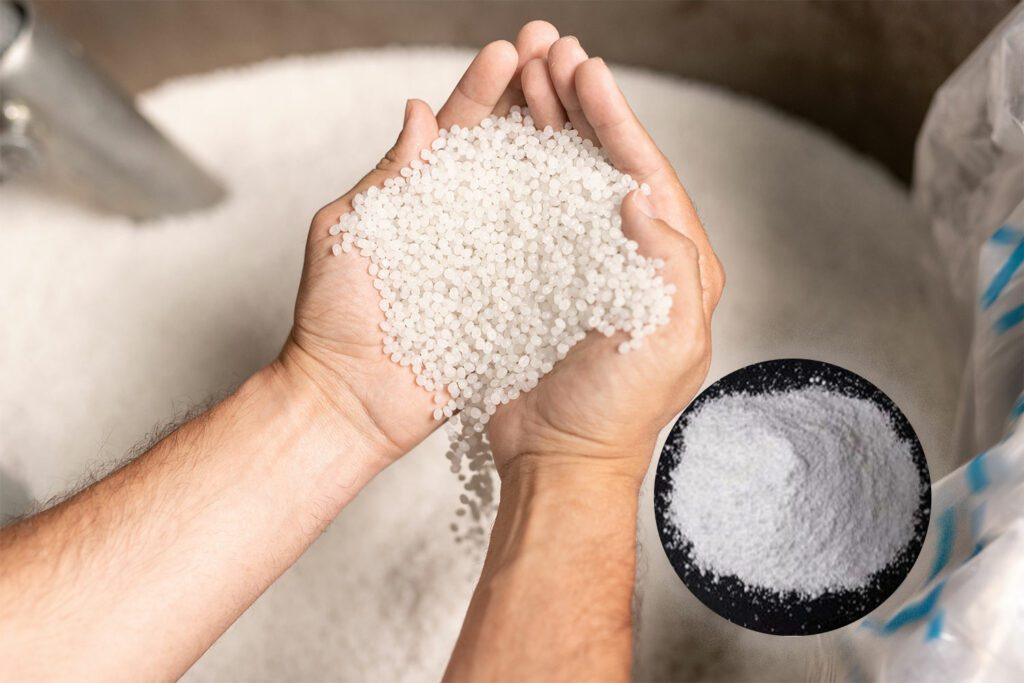pengantar

Polyvinylidene Difluoride (PVDF) is a versatile and high-performance polymer that has found its way into a myriad of applications due to its unique combination of properties. Known for its exceptional resistance to chemicals, weather, and heat, PVDF is a preferred material in industries ranging from aerospace to electronics. This comprehensive guide will delve into the properties of PVDF, its manufacturing process, and explore the various applications where it is utilized.
The Unique Attributes of Polyvinylidene Difluoride
Polyvinylidene difluoride, derived from the copolymerization of vinylidene fluoride, stands out for its unique attributes, which include its non-reactive nature, impressive energy density, and exceptional mechanical prowess. This copolymer exhibits an intriguing combination of properties that set it apart in various applications. Its inertness renders it resistant to chemical reactions, making it suitable for use in environments where other materials might corrode or degrade. Moreover, its high energy density makes it a valuable choice for applications requiring efficient energy storage or conversion.
Importance in Modern Industries
Its significance in contemporary industries cannot be emphasized enough, as it serves as a vital material in manufacturing a plethora of components and products necessitating exceptional durability and dependability. Polyvinylidene difluoride plays a pivotal role in ensuring the integrity and performance of critical applications across diverse sectors. Its utilization spans from aerospace and automotive engineering to electronics, healthcare, and construction, where its unrivaled properties contribute to the creation of high-quality, long-lasting products.
Sifat Polivinilidena Difluorida
Ketahanan Kimia
Polyvinylidene difluoride is highly resistant to a broad range of chemicals, including acids, alkalis, and solvents, making it ideal for use in corrosive environments.
Stabilitas Termal
It can operate in high-temperature environments, with a continuous service temperature up to 150°C (302°F), and a short-term resistance to temperatures up to 160°C (320°F).
Kekuatan Mekanik
Polyvinylidene difluoride exhibits excellent mechanical properties, including high tensile strength and flexibility, which contribute to its durability.
Insulasi listrik
It is an excellent electrical insulator, with a high dielectric strength and low dielectric constant, making it suitable for use in electrical and electronic applications.
Tahan Cuaca
Polyvinylidene difluoride is highly resistant to UV radiation and does not degrade when exposed to sunlight, which makes it suitable for outdoor applications.
Table1: Key Properties of Polyvinylidene Difluoride
| Properti | Keterangan |
|---|---|
| Ketahanan Kimia | Highly resistant to acids, alkalis, and solvents |
| Stabilitas Termal | Serviceable up to 150°C (302°F), short-term resistance to 160°C (320°F) |
| Kekuatan Mekanik | High tensile strength and flexibility |
| Insulasi listrik | High dielectric strength and low dielectric constant |
| Tahan Cuaca | Resistant to UV radiation, does not degrade under sunlight exposure |
Manufacturing Process of Polyvinylidene Difluoride
Polymerization
The production of PVDF typically begins with the polymerization of vinylidene fluoride (VDF) monomers.
Melt Processing
After polymerization, the PVDF resin is processed through various methods, such as extrusion or injection molding, to form the desired shapes and products.
Sintering
In some applications, a sintering process is used to achieve high-density parts with specific mechanical properties.
Post-Processing
Finally, the PVDF parts may undergo post-processing, such as machining or surface treatment, to meet the exacting requirements of their intended applications.
Penerapan PVDF
Aerospace Industry
PVDF is used in aerospace for components that require high strength-to-weight ratios and resistance to harsh environments.
Electronics and Electrical
Its excellent insulating properties make it a go-to material for wire and cable insulation, as well as for the production of lithium-ion batteries.
Pengolahan Kimia
PVDF piping and tanks are widely used in the chemical industry for handling aggressive chemicals.
Medical Applications
Due to its biocompatibility and sterilizability, PVDF is used in various medical devices, including implants and diagnostic equipment.
Construction and Architecture
Its weather resistance makes PVDF an ideal choice for architectural applications such as cladding and roofing materials.
Table 2: Common Applications of PVDF
| Industri | Application Area |
|---|---|
| Luar angkasa | Aircraft components, structural parts |
| Electronics and Electrical | Wire and cable insulation, battery components |
| Pengolahan Kimia | Piping, tanks, valves for corrosive chemicals |
| Medis | Implant materials, diagnostic equipment |
| Construction and Architecture | Cladding, roofing materials, window frames |
Environmental Impact and Recycling

PVDF is considered an environmentally friendly material due to its durability and resistance to degradation. However, like all plastics, the recycling of PVDF is important to minimize waste and environmental impact.
Recycling Challenges
Recycling PVDF can be challenging due to its high melting point and resistance to degradation.
Recycling Methods
Despite the challenges, there are methods available for recycling PVDF, including mechanical recycling and chemical depolymerization.
Environmental Initiatives
Many organizations are working on improving the recycling and reuse of PVDF to reduce its environmental footprint.
Kesimpulan
Polyvinylidene Difluoride, with its robust set of properties, has established itself as a crucial material in a variety of industries. From its chemical and thermal stability to its mechanical strength and electrical insulation capabilities, PVDF continues to be a polymer of choice for demanding applications. As we move towards a more sustainable future, the focus on recycling and reducing the environmental impact of materials like PVDF will be paramount. Understanding the properties and uses of PVDF is not just about leveraging its current benefits but also about exploring ways to improve its lifecycle and integration into a circular economy.
- Mitra bisnis
- Produk kimia
- Alkohol Lemak Alami
- Bubur Neopentil Glikol
- Polivinilidena Difluorida
- natrium format
Pertanyaan Umum
What are the main advantages of using PVDF in the aerospace industry?
PVDF’s high strength-to-weight ratio, resistance to harsh environments, and durability make it ideal for aerospace applications.
Can PVDF be used in food processing equipment?
Yes, PVDF is often used in the food processing industry for its chemical resistance and ability to withstand high-pressure cleaning without degrading.
Is PVDF suitable for use in high-voltage applications?
Absolutely, PVDF’s high dielectric strength and low dielectric constant make it an excellent insulating material for high-voltage applications.
How does PVDF compare to other plastics in terms of chemical resistance?
PVDF has one of the highest chemical resistance profiles among plastics, being highly resistant to a wide range of chemicals, including acids, alkalis, and solvents.
What are some of the recycling challenges associated with PVDF?
The high melting point of PVDF and its resistance to degradation make it more difficult to recycle compared to other plastics. However, with the right processes in place, it can be recycled effectively.


